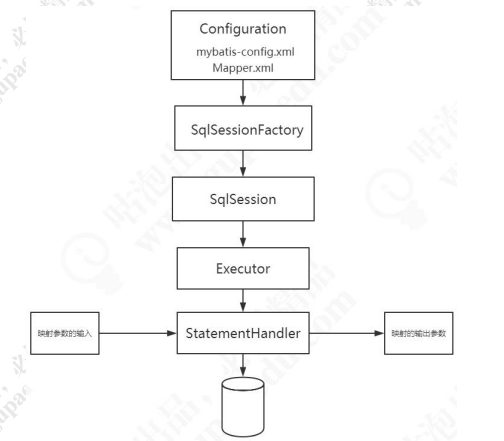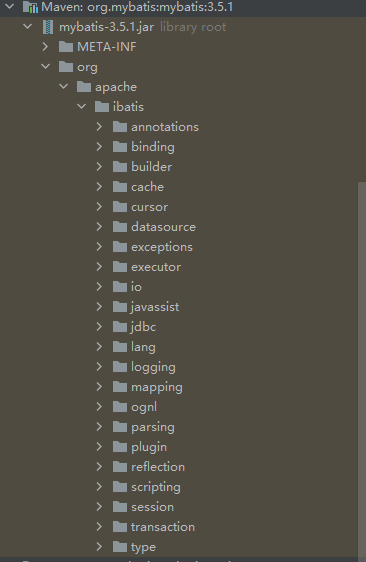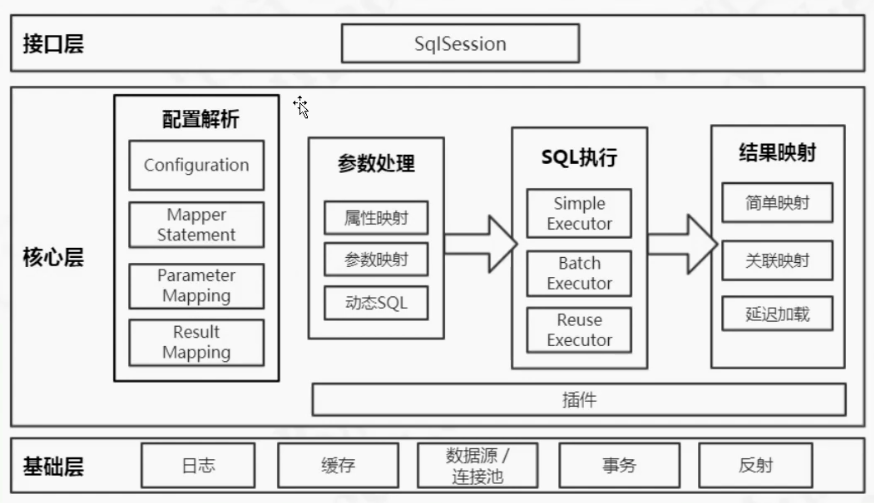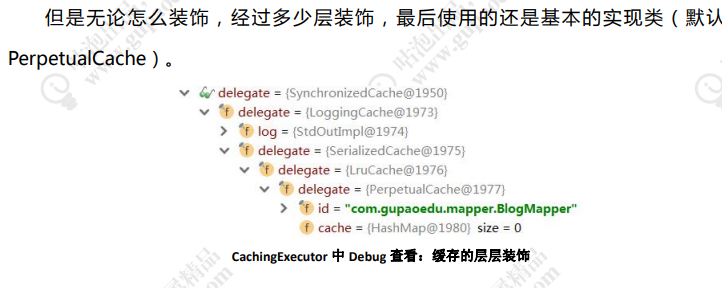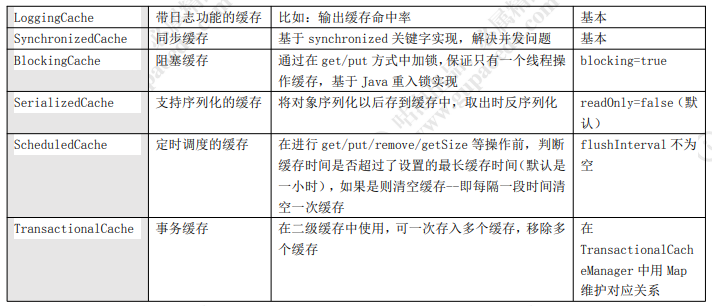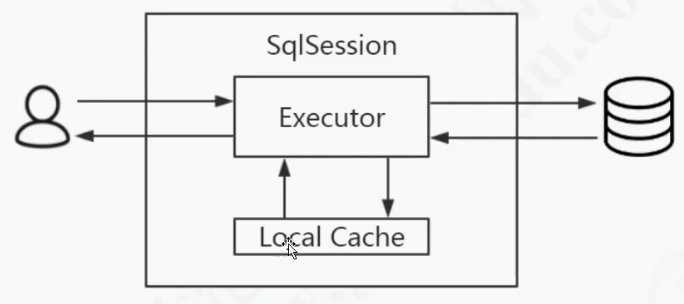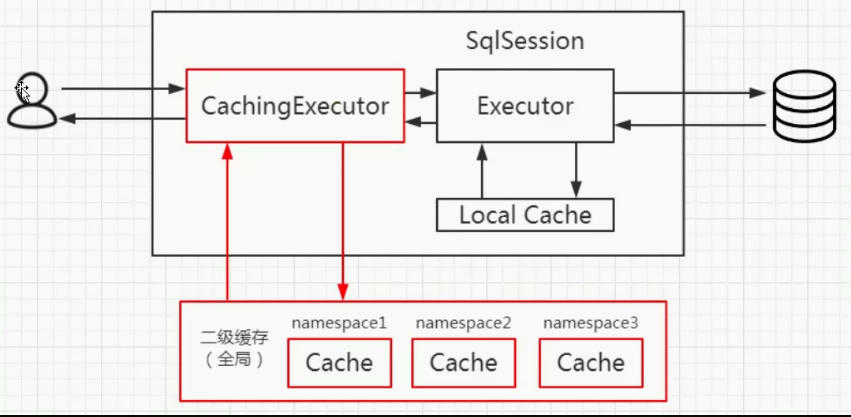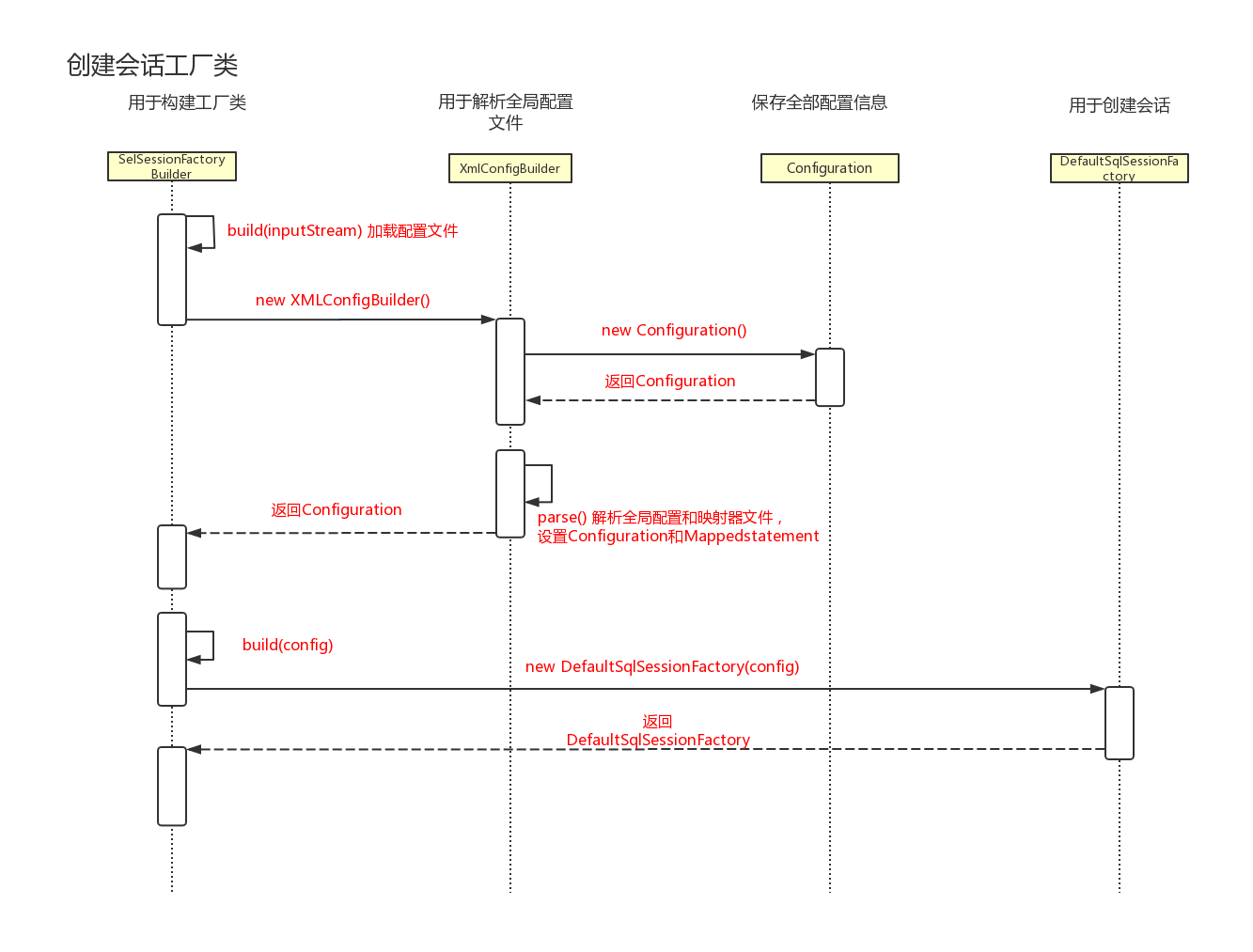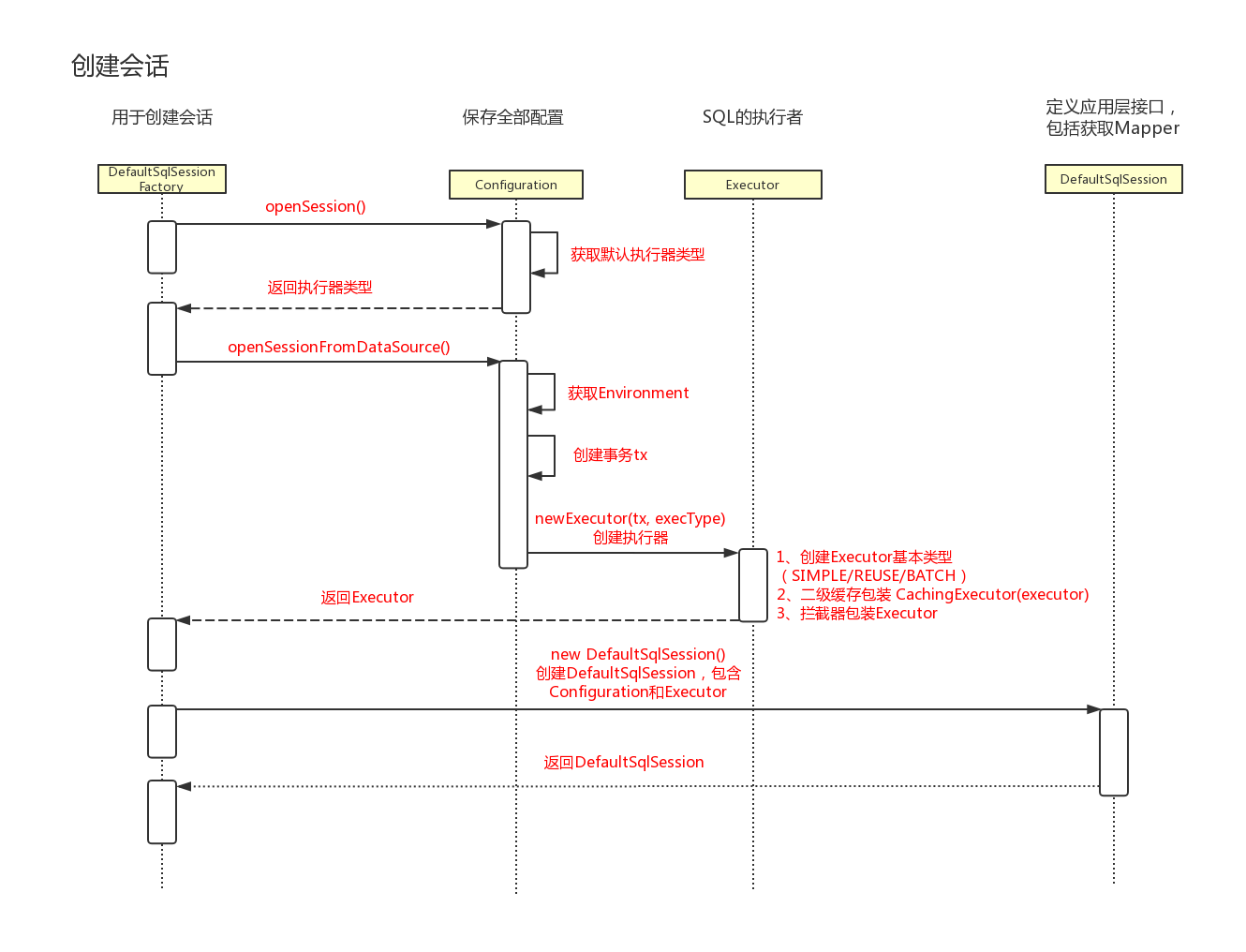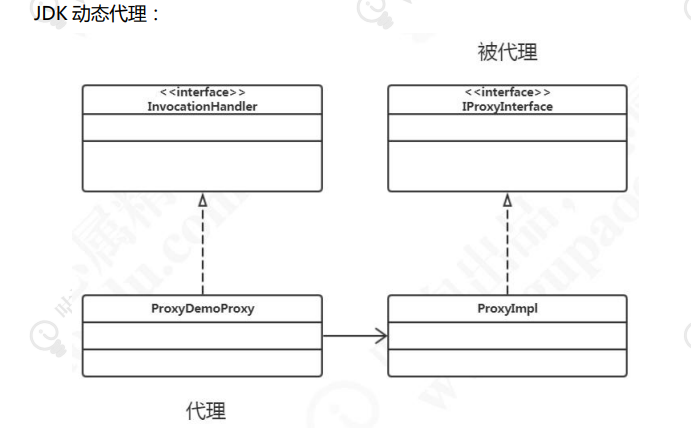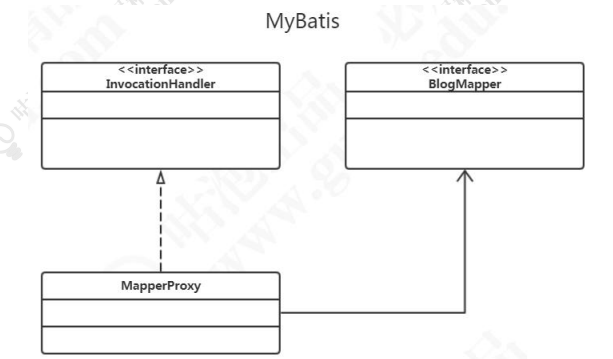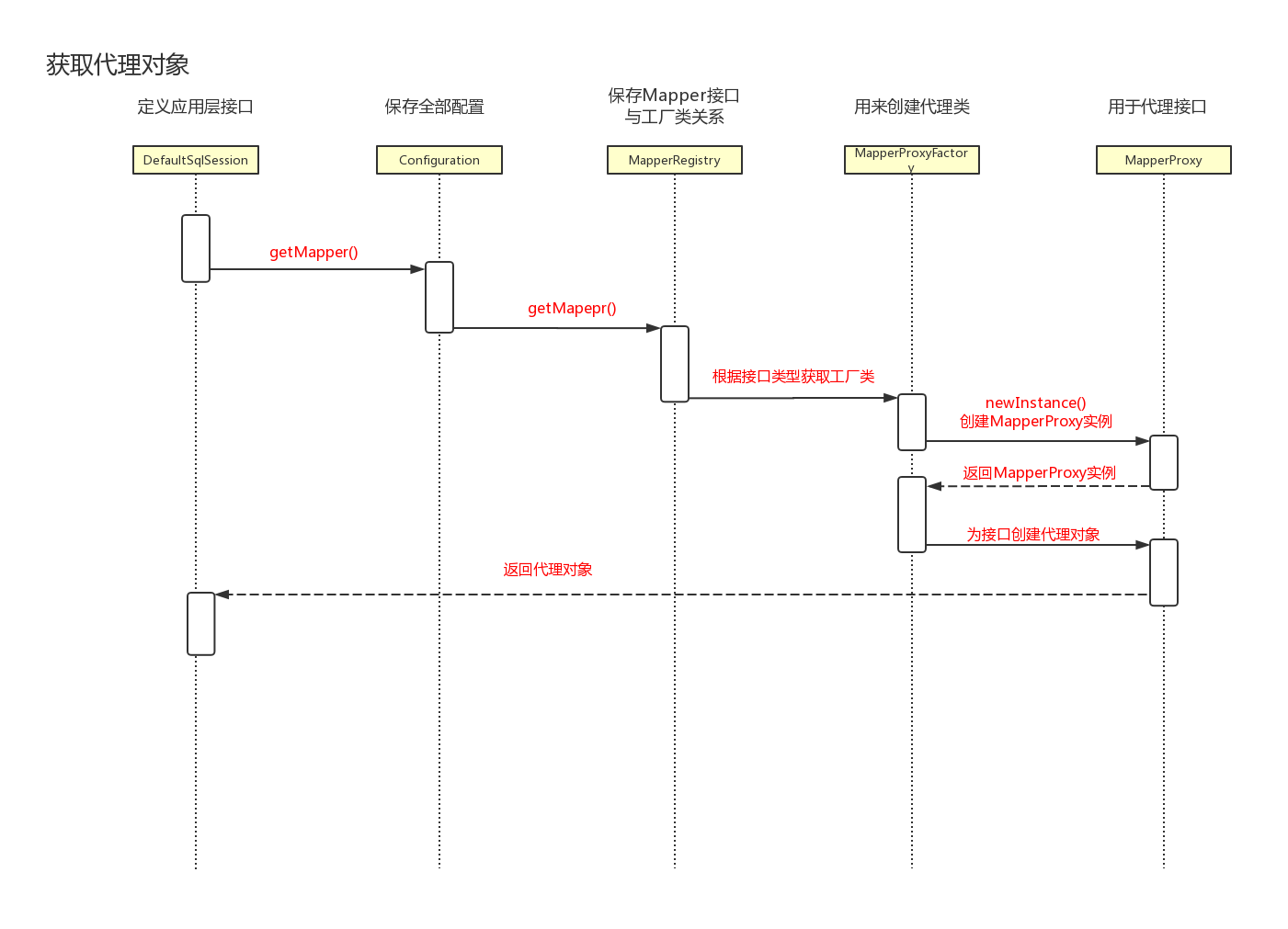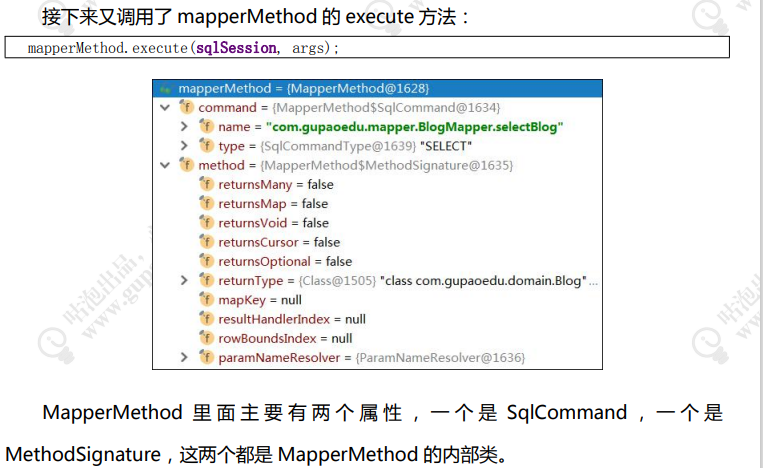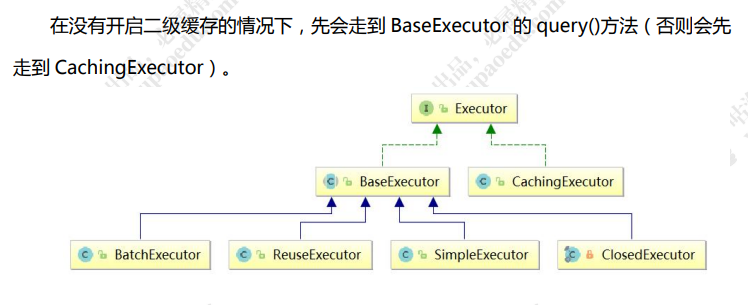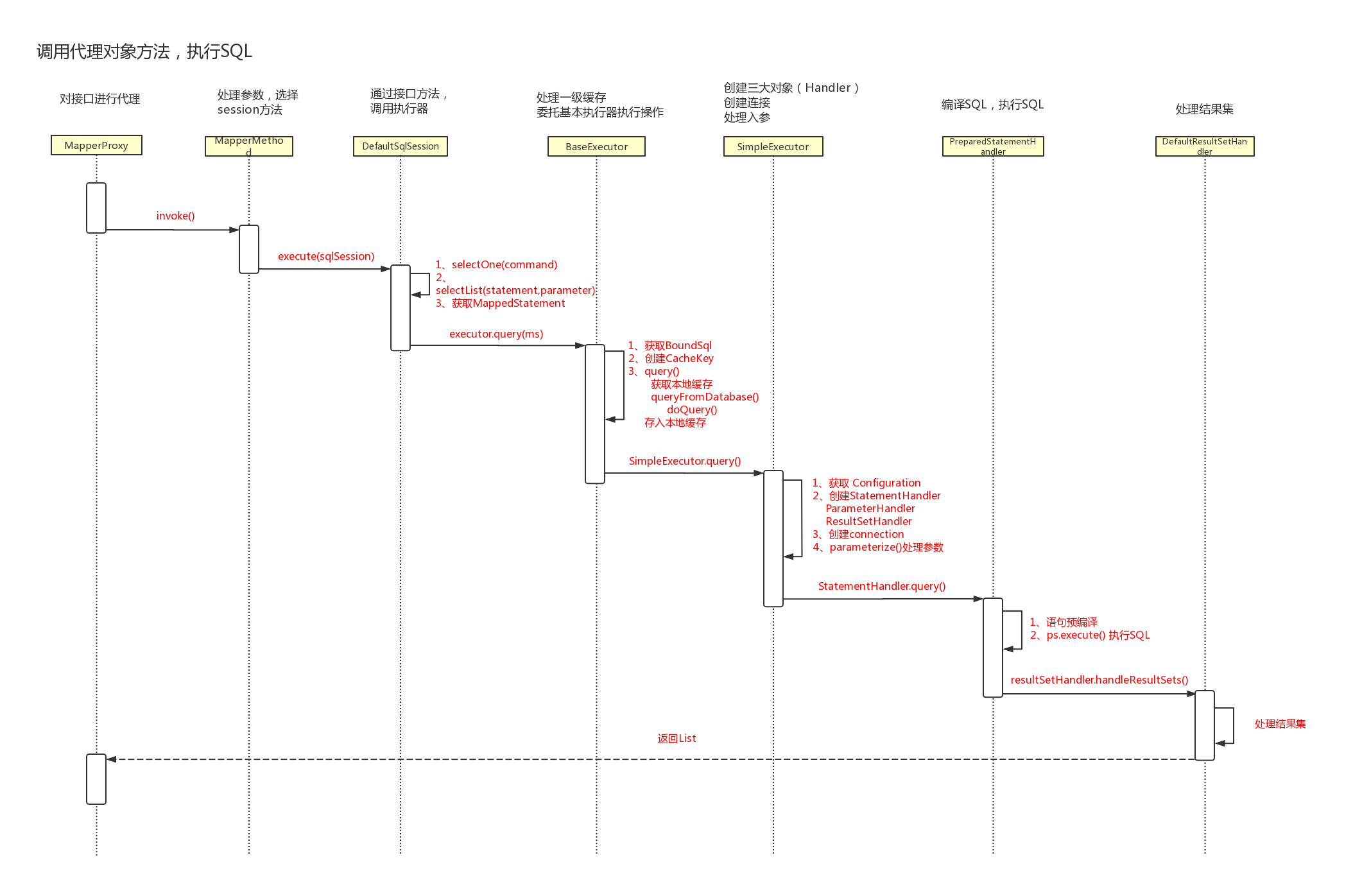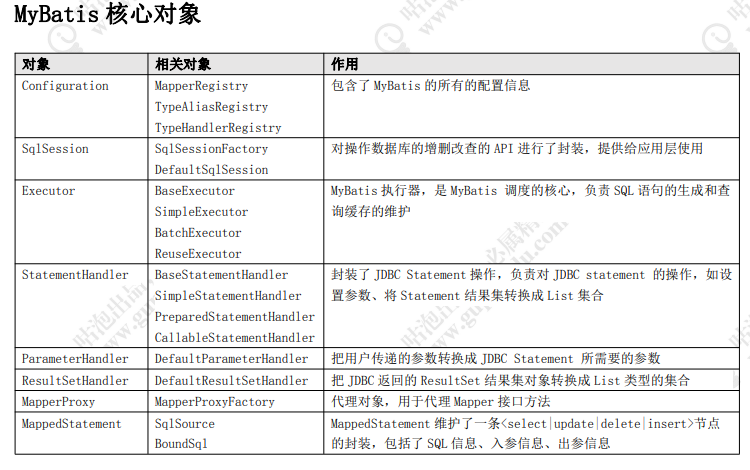1.解析配置文件
2.创建工厂类
3.创建会话
4.会话操作数据库
1.提供给应用使用:接口层
2.处理数据库操作:核心层
3.支持工作:基础层
所有的缓存实现类总体上可分为三类:基本缓存、淘汰算法缓存、装饰器缓存。
一级缓存是基于sqlsession的缓存,会话是无法共享的。不同的一级会话对数据修改会产生脏数据。
作用域:namespace
二级缓存应该工作在一级缓存之前。
第一步:在mybatis-config.xml文件配置
<setting name="cacheEnabled" value="true"/>第二步:在 Mapper.xml 中配置标签
<!-- 声明这个 namespace 使用二级缓存 -->
<cache type="org.apache.ibatis.cache.impl.PerpetualCache"
size="1024" <!--最多缓存对象个数,默认 1024-->
eviction="LRU" <!--回收策略-->
flushInterval="120000" <!--自动刷新时间 ms,未配置时只有调用时刷新-->
readOnly="false"/> <!--默认是 false(安全),改为 true 可读写时,对象必须支持序列化 -->我们可以在单个 Statement ID 上显式关闭二级缓存(默认是 true)
<select id="selectBlog" resultMap="BaseResultMap" useCache="false>二级缓存的key是什么?怎么命中缓存?
参数+mapper
private void parseConfiguration(XNode root) {
try {
//issue #117 read properties first
propertiesElement(root.evalNode("properties"));
Properties settings = settingsAsProperties(root.evalNode("settings"));
loadCustomVfs(settings);
loadCustomLogImpl(settings);
typeAliasesElement(root.evalNode("typeAliases"));
pluginElement(root.evalNode("plugins"));
objectFactoryElement(root.evalNode("objectFactory"));
objectWrapperFactoryElement(root.evalNode("objectWrapperFactory"));
reflectorFactoryElement(root.evalNode("reflectorFactory"));
settingsElement(settings);
// read it after objectFactory and objectWrapperFactory issue #631
environmentsElement(root.evalNode("environments"));
databaseIdProviderElement(root.evalNode("databaseIdProvider"));
typeHandlerElement(root.evalNode("typeHandlers"));
mapperElement(root.evalNode("mappers"));
} catch (Exception e) {
throw new BuilderException("Error parsing SQL Mapper Configuration. Cause: " + e, e);
}
}Executor 的基本类型有三种:SIMPLE、BATCH、REUSE,默认是 SIMPLE (settingsElement()读取默认值),他们都继承了抽象类 BaseExecutor。
public abstract class BaseExecutor implements Executor {
protected abstract int doUpdate(MappedStatement ms, Object parameter)
throws SQLException;
protected abstract List<BatchResult> doFlushStatements(boolean isRollback)
throws SQLException;
protected abstract <E> List<E> doQuery(MappedStatement ms, Object parameter, RowBounds rowBounds, ResultHandler resultHandler, BoundSql boundSql)
throws SQLException;
protected abstract <E> Cursor<E> doQueryCursor(MappedStatement ms, Object parameter, RowBounds rowBounds, BoundSql boundSql)
throws SQLException;
}问题:三种类型的区别(通过 update()方法对比)?
SimpleExecutor:每执行一次 update 或 select,就开启一个 Statement 对象,用 完立刻关闭 Statement 对象。
ReuseExecutor:执行 update 或 select,以 sql 作为 key 查找 Statement 对象, 存在就使用,不存在就创建,用完后,不关闭 Statement 对象,而是放置于 Map 内, 供下一次使用。简言之,就是重复使用 Statement 对象。
BatchExecutor:执行 update(没有 select,JDBC 批处理不支持 select),将所 有 sql 都添加到批处理中(addBatch()),等待统一执行(executeBatch()),它缓存 了多个 Statement 对象,每个 Statement 对象都是 addBatch()完毕后,等待逐一执行 executeBatch()批处理。与 JDBC 批处理相同。
创建会话的过程,我们获得了一个 DefaultSqlSession,里面包含了一个 Executor,它是 SQL 的执行者。
public <T> T getMapper(Class<T> type) {
return configuration.getMapper(type, this);
} public <T> T getMapper(Class<T> type, SqlSession sqlSession) {
return mapperRegistry.getMapper(type, sqlSession);
} @SuppressWarnings("unchecked")
public <T> T getMapper(Class<T> type, SqlSession sqlSession) {
final MapperProxyFactory<T> mapperProxyFactory = (MapperProxyFactory<T>) knownMappers.get(type);
if (mapperProxyFactory == null) {
throw new BindingException("Type " + type + " is not known to the MapperRegistry.");
}
try {
return mapperProxyFactory.newInstance(sqlSession);
} catch (Exception e) {
throw new BindingException("Error getting mapper instance. Cause: " + e, e);
}
} public T newInstance(SqlSession sqlSession) {
final MapperProxy<T> mapperProxy = new MapperProxy<>(sqlSession, mapperInterface, methodCache);
return newInstance(mapperProxy);
} protected T newInstance(MapperProxy<T> mapperProxy) {
return (T) Proxy.newProxyInstance(mapperInterface.getClassLoader(), new Class[] { mapperInterface }, mapperProxy);
}JDK动态代理
Mybatis代理
// 获取缓存,保存了方法签名和接口方法的关系
final MapperMethod mapperMethod = cachedMapperMethod(method);DefaultSqlSession.java
public <E> List<E> selectList(String statement, Object parameter, RowBounds rowBounds) {
try {
MappedStatement ms = configuration.getMappedStatement(statement);
return executor.query(ms, wrapCollection(parameter), rowBounds, Executor.NO_RESULT_HANDLER);
} catch (Exception e) {
throw ExceptionFactory.wrapException("Error querying database. Cause: " + e, e);
} finally {
ErrorContext.instance().reset();
}
}1)创建 CacheKey
从 Configuration 中获取 MappedStatement, 然后从 BoundSql 中获取 SQL 信 息,创建 CacheKey。这个 CacheKey 就是缓存的 Key。 然后再调用另一个 query()方法
// CachingExecutor.java
// 二级缓存
public <E> List<E> query(MappedStatement ms, Object parameterObject, RowBounds rowBounds, ResultHandler resultHandler, CacheKey key, BoundSql boundSql)
throws SQLException {
Cache cache = ms.getCache();
if (cache != null) {
flushCacheIfRequired(ms);
if (ms.isUseCache() && resultHandler == null) {
ensureNoOutParams(ms, boundSql);
@SuppressWarnings("unchecked")
List<E> list = (List<E>) tcm.getObject(cache, key);
if (list == null) {
list = delegate.query(ms, parameterObject, rowBounds, resultHandler, key, boundSql);
tcm.putObject(cache, key, list); // issue #578 and #116
}
return list;
}
}
return delegate.query(ms, parameterObject, rowBounds, resultHandler, key, boundSql);
}// BaseExecutor.java
// 一级缓存
public <E> List<E> query(MappedStatement ms, Object parameter, RowBounds rowBounds, ResultHandler resultHandler, CacheKey key, BoundSql boundSql) throws SQLException {
ErrorContext.instance().resource(ms.getResource()).activity("executing a query").object(ms.getId());
if (closed) {
throw new ExecutorException("Executor was closed.");
}
if (queryStack == 0 && ms.isFlushCacheRequired()) {
clearLocalCache();
}
List<E> list;
try {
queryStack++;
list = resultHandler == null ? (List<E>) localCache.getObject(key) : null;
if (list != null) {
handleLocallyCachedOutputParameters(ms, key, parameter, boundSql);
} else {
list = queryFromDatabase(ms, parameter, rowBounds, resultHandler, key, boundSql);
}
} finally {
queryStack--;
}
if (queryStack == 0) {
for (DeferredLoad deferredLoad : deferredLoads) {
deferredLoad.load();
}
// issue #601
deferredLoads.clear();
if (configuration.getLocalCacheScope() == LocalCacheScope.STATEMENT) {
// issue #482
clearLocalCache();
}
}
return list;
}// BaseExector.java
// 一级缓存 get put
private <E> List<E> queryFromDatabase(MappedStatement ms, Object parameter, RowBounds rowBounds, ResultHandler resultHandler, CacheKey key, BoundSql boundSql) throws SQLException {
List<E> list;
localCache.putObject(key, EXECUTION_PLACEHOLDER);
try {
list = doQuery(ms, parameter, rowBounds, resultHandler, boundSql);
} finally {
localCache.removeObject(key);
}
localCache.putObject(key, list);
if (ms.getStatementType() == StatementType.CALLABLE) {
localOutputParameterCache.putObject(key, parameter);
}
return list;
}// SimpleExector.java
// 一级缓存
public <E> List<E> doQuery(MappedStatement ms, Object parameter, RowBounds rowBounds, ResultHandler resultHandler, BoundSql boundSql) throws SQLException {
Statement stmt = null;
try {
Configuration configuration = ms.getConfiguration();
StatementHandler handler = configuration.newStatementHandler(wrapper, ms, parameter, rowBounds, resultHandler, boundSql);
stmt = prepareStatement(handler, ms.getStatementLog());
return handler.query(stmt, resultHandler);
} finally {
closeStatement(stmt);
}
}2)清空本地缓存
queryStack 用于记录查询栈,防止递归查询重复处理缓存。 flushCache=true 的时候,会先清理本地缓存(一级缓存):clearLocalCache(); 如果没有缓存,会从数据库查询:queryFromDatabase() 如果 LocalCacheScope == STATEMENT,会清理本地缓存。
3)从数据库查询
a)缓存 先在缓存用占位符占位。执行查询后,移除占位符,放入数据。
b)查询 执行 Executor 的 doQuery();默认是 SimpleExecutor
1)创建 StatementHandle
在 configuration.newStatementHandler()中,new 一个 StatementHandler,先 得到 RoutingStatementHandler。
RoutingStatementHandler 里 面 没 有 任 何 的 实 现 , 是 用 来 创 建 基 本 的 StatementHandler 的。这里会根据 MappedStatement 里面的 statementType 决定 StatementHandler 的 类 型 。 默 认 是 PREPARED ( STATEMENT 、 PREPARED 、 CALLABLE)
// RoutingStatementHandler.java
public RoutingStatementHandler(Executor executor, MappedStatement ms, Object parameter, RowBounds rowBounds, ResultHandler resultHandler, BoundSql boundSql) {
switch (ms.getStatementType()) {
case STATEMENT:
delegate = new SimpleStatementHandler(executor, ms, parameter, rowBounds, resultHandler, boundSql);
break;
case PREPARED:
delegate = new PreparedStatementHandler(executor, ms, parameter, rowBounds, resultHandler, boundSql);
break;
case CALLABLE:
delegate = new CallableStatementHandler(executor, ms, parameter, rowBounds, resultHandler, boundSql);
break;
default:
throw new ExecutorException("Unknown statement type: " + ms.getStatementType());
}
}// BaseStatementHandler.java
protected BaseStatementHandler(Executor executor, MappedStatement mappedStatement, Object parameterObject, RowBounds rowBounds, ResultHandler resultHandler, BoundSql boundSql) {
this.configuration = mappedStatement.getConfiguration();
this.executor = executor;
this.mappedStatement = mappedStatement;
this.rowBounds = rowBounds;
this.typeHandlerRegistry = configuration.getTypeHandlerRegistry();
this.objectFactory = configuration.getObjectFactory();
if (boundSql == null) { // issue #435, get the key before calculating the statement
generateKeys(parameterObject);
boundSql = mappedStatement.getBoundSql(parameterObject);
}
this.boundSql = boundSql;
this.parameterHandler = configuration.newParameterHandler(mappedStatement, parameterObject, boundSql);
this.resultSetHandler = configuration.newResultSetHandler(executor, mappedStatement, rowBounds, parameterHandler, resultHandler, boundSql);
}2)创建 Statement
3)执行的 StatementHandler 的 query()方法
// PreparedStatementHandler.java
public <E> List<E> query(Statement statement, ResultHandler resultHandler) throws SQLException {
PreparedStatement ps = (PreparedStatement) statement;
ps.execute();
return resultSetHandler.handleResultSets(ps);
}4)执行 PreparedStatement 的 execute()方法
5)ResultSetHandler 处理结果集
// DefaultResultSetHandler.java
public List<Object> handleResultSets(Statement stmt) throws SQLException {
ErrorContext.instance().activity("handling results").object(mappedStatement.getId());
final List<Object> multipleResults = new ArrayList<>();
int resultSetCount = 0;
ResultSetWrapper rsw = getFirstResultSet(stmt);
List<ResultMap> resultMaps = mappedStatement.getResultMaps();
int resultMapCount = resultMaps.size();
validateResultMapsCount(rsw, resultMapCount);
while (rsw != null && resultMapCount > resultSetCount) {
ResultMap resultMap = resultMaps.get(resultSetCount);
handleResultSet(rsw, resultMap, multipleResults, null);
rsw = getNextResultSet(stmt);
cleanUpAfterHandlingResultSet();
resultSetCount++;
}
String[] resultSets = mappedStatement.getResultSets();
if (resultSets != null) {
while (rsw != null && resultSetCount < resultSets.length) {
ResultMapping parentMapping = nextResultMaps.get(resultSets[resultSetCount]);
if (parentMapping != null) {
String nestedResultMapId = parentMapping.getNestedResultMapId();
ResultMap resultMap = configuration.getResultMap(nestedResultMapId);
handleResultSet(rsw, resultMap, null, parentMapping);
}
rsw = getNextResultSet(stmt);
cleanUpAfterHandlingResultSet();
resultSetCount++;
}
}
return collapseSingleResultList(multipleResults);
}